
Introduction
Goals and Goal Setting
Goals Common to All RST Writers
Other Goals to Consider
Defining My Own Goals
Advice about Assignments
Getting Started: Listing Topics to Write about in the Tutorial
Narrative One: Personal Piece on a Significant Experience
Narrative Two: Academic Piece on a Significant Experience
Summary/Response One
Summary/Response Two
Tutorial Evaluation Postscript
On Using the Resources for Writers
Generating and Developing Ideas
Finding/Expressing Main Ideas
Showing v. Telling Sentences
Focusing Topic Sentences
Thesis Statements
Reading Strategies
Assessing Your Reading Strategies
Summarizing

Writing Effective Summary and Response Essays
Discourse Analysis Worksheet
Trade Magazines
Selecting Readings
A summary is a concise paraphrase of all the main ideas in an essay. It cites the author and the title (usually in the first sentence); it contains the essay's thesis and supporting ideas; it may use direct quotation of forceful or concise statements of the author's ideas; it will NOT usually cite the author's examples or supporting details unless they are central to the main idea. Most summaries present the major points in the order that the author made them and continually refer back to the article being summarized (i.e. "Damon argues that ..." or "Goodman also points out that ... "). The summary should take up no more than one-third the length of the work being summarized.
The Response:
A response is a critique or evaluation of the author's essay. Unlike the summary, it is composed of YOUR opinions in relation to the article being summarized. It examines ideas that you agree or disagree with and identifies the essay's strengths and weaknesses in reasoning and logic, in quality of supporting examples, and in organization and style. A good response is persuasive; therefore, it should cite facts, examples, and personal experience that either refutes or supports the article you're responding to, depending on your stance.
Two Typical Organizational Formats for Summary/Response Essays:
1. Present the summary in a block of paragraphs, followed by the response in a block:
Intro/thesis Summary (two to three paragraphs) Agreement (or disagreement) Disagreement (or agreement) Conclusion
Note: Some essays will incorporate both agreement and disagreement in a response, but this is not mandatory.
2. Introduce the essay with a short paragraph that includes your thesis. Then, each body paragraph summarizes one point and responds to it, and a conclusion wraps the essay up.
Intro/thesis Summary point one; agree/disagree Summary point two; agree/disagree Summary point three; agree/disagree Conclusion
How to Summarize an Essay: Proven Strategies and Tips

Learning how to summarize an essay is an important skill to develop during your academic career. As a student, you will likely be assigned many essays to read, and as part of these assignments, you’ll likely have to write responses to them and/or discuss them with your classmates. In order to do that, you’ll have to be able to restate briefly what the essay says.
Beyond summarizing essays for assignments, developing this skill will also enhance your ability to think critically, review efficiently, and read with a discerning eye.
Work smarter with Grammarly The AI writing partner for anyone with work to do Get Grammarly
What is essay summarization?
Essay summarization is the process of distilling the main points, arguments, and essential information from an essay into a concise overview. An essay summary is short, just a paragraph or two, and discusses the essay’s key details and themes.
Summarizing an essay is not the same as writing or reviewing an essay. In a review, you incorporate your personal insights, opinions, and critiques. A summary, on the other hand, is a completely objective piece of writing that only includes information that can be found in the source material.
If you’ve ever been asked to write an abstract about an essay, you’re already familiar with writing an essay summary . That’s because an abstract is a summary of a piece of academic writing , such as an essay or research paper. It states the essay’s main argument, supporting evidence, and conclusions.
Preparing to summarize an essay
A strong summary effectively communicates the original essay’s thesis statement and supporting arguments. To write a strong summary, read the essay carefully and take notes on:
- Its main argument and the evidence used to support it
- Any additional arguments in the essay
- The type of essay it is (analytical, expository, personal, etc.)
- The essay’s structure
- References made in the essay, if any
Out of all of these points, identifying and discussing the essay’s thesis statement is the most important. If you’re not sure of the essay’s thesis statement, reread its introductory paragraph and determine the main point its author is making. It can be helpful to ask yourself, “What is this essay about?” The answer can help you decode the thesis statement.
Reading strategies for effective summarization
As you read the essay critically, take detailed notes. Although you can glean the essay’s structure from skimming it, you shouldn’t only skim the text. To fully understand it, you need to read the essay closely, ideally without distractions.
Highlight key information and include it in your notes. By isolating key information like the thesis statement, cited references, and supporting arguments, you’re setting yourself up to write a strong outline for your summary.
Steps to summarize an essay
To effectively summarize an essay, follow these steps:
1 Read the essay: Fully read the essay to understand its main argument and structure. As you do this, identify the essay’s thesis statement and main arguments, which will be featured in your summary.
2 Identify main points: Pinpoint the key points and arguments within the essay.
3 Take notes: Write down the major points and any crucial supporting evidence.
4 Draft your summary: Start with the essay’s main argument, then concisely outline the primary points in your own words.
5 Review for accuracy: Compare your summary to the original to ensure you’ve accurately captured the essential ideas.
6 Cite the original essay: If applicable, properly cite the original work to acknowledge your source. This is important for avoiding plagiarism . Citations also allow readers of your summary to locate the original essay for further reading or verification of the details. Depending on the citation style you’re required to use (such as APA , MLA , Chicago ), the format of your citation will vary. Make sure to follow the specific guidelines of the citation style you’re using to ensure accuracy and consistency. Grammarly’s citation generator makes this easy.
7 Proofread: Proofread your summary for clarity, grammar, and spelling errors. Grammarly’s free AI-powered grammar checker can pinpoint grammatical errors, spelling mistakes, and punctuation inaccuracies in seconds. Additionally, reading your summary aloud can help you catch errors or awkward phrasing that you might miss when reading silently.
Dos and don’ts of essay summarization
When you’re writing an essay summary, stick to the following best practices:
- Be objective. No matter what kind of essay you’re summarizing, the correct tone is a neutral, academic one.
- Cite your sources. With an academic essay, it’s likely you’ll mention academic sources in your summary. Be sure to cite them to avoid unintentional plagiarism . Additionally, you can use Grammarly to acknowledge your use of AI if you’ve used a tool like Grammarly’s free summary generator.
- Keep it short. A summary should only cover the original essay’s highlights. You can omit details that aren’t directly relevant to the thesis statement.
Additionally, avoid the following:
- Including your opinions or interpretations. A summary is a straightforward, informational piece of writing.
- Misinterpreting the essay’s argument. Every essay, even those that are not argumentative essays, has a specific argument or position—also known as the thesis statement . Read the essay thoroughly and carefully, checking that the supporting arguments align with the thesis statement, to ensure you understand it. You don’t need to agree with it to summarize the essay—you just need to understand it.
The importance of critical thinking in summarization
With essays, more critical thinking is necessary on the summarizer’s part than with other types of writing, like stories. This is because your summary needs to represent the original essay accurately. That means you can’t merely regurgitate what you’ve read—you must also clearly express its intent and goals. As you read and take notes, answer the following questions:
- What is the author communicating through their essay?
- How do they support this position?
- Why might they feel this position is correct and important?
Example of an essay summary
What is the human experience? In her essay “This Is the Life,” Annie Dillard explores this question and themes of cultural relativism as she introduces a wide range of scenarios, asking the reader to contemplate them. Throughout the essay, Dillard asks questions surrounding these scenarios, simultaneously suggesting that some knowledge is inherent to humanity, like the knowledge that bees sting. Tying these experiences together, Dillard states the actions all humans perform, noting that “most humans who were ever alive lived inside a single culture that had not changed for hundreds of thousands of years.” (Dillard).
(Summarized from This Is the Life: Annie Dillard Asks, Then What? )
Tools and resources for summarizing essays
Grammarly’s AI-powered summary generator can help you write all kinds of summaries, including essay summaries, in just a few clicks. Use it to draft concise, well-formatted summaries efficiently. After drafting, use Grammarly to cite the original source of your summary to prevent plagiarism . This step is crucial for maintaining academic integrity and giving credit where it’s due.
Essay summarization FAQs
Essay summarization is the process of condensing an essay’s main points and ideas into a shorter, clearer form without losing the original meaning.
What’s the difference between summarizing and paraphrasing an essay?
Summarizing involves creating a concise overview of an essay, focusing only on its main points, without inserting personal views. Paraphrasing , on the other hand, entails rewriting the essay in your own words, covering all its points but in a more condensed form than the original.
How do I avoid plagiarism when summarizing an essay?
Avoid plagiarism when summarizing an essay by writing the summary in your own words. When you absolutely need to borrow text from either the original story or another summary, make sure to cite the source. Grammarly offers generative AI features to enable responsible AI use throughout the entire writing process. Grammarly also makes it easy for you to acknowledge your use of AI.
How can I make my essay summary stand out?
Make your essay summary stand out by accurately summarizing the original’s thesis statement and supporting arguments in an engaging way. Be clear and get straight to the point. Start with a strong sentence that shows what the essay is about, stick to the main ideas, and refrain from including your opinion.
How can I use AI to summarize essays?
AI tools like Grammarly’s summary generator make it easy to quickly pinpoint the main ideas of an essay and distill them into a concise, well-formatted summary. Then you can use Grammarly to refine your summary further, ensuring it’s mistake-free and effectiv

Want to create or adapt books like this? Learn more about how Pressbooks supports open publishing practices.
Summary/Response Essays: Overview
A summary/response essay may, at first, seem like a simplistic exercise for a college course. But the truth is that most academic writing requires us to successfully accomplish at least two tasks: summarizing what others have said and presenting what you have to say. Because of this, summarizing and responding are core skills that every writer should possess.
Being able to write an effective summary helps us make sense of what others have to say about a topic and how they choose to say it. As writers, we all need to make an effort to recognize, understand, and consider various perspectives about different issues. One way to do this is to accurately summarize what someone else has written, but accomplishing this requires us to first be active and engaged readers.
Along with the other methods covered in the Reading Critically chapter , writing a good summary requires taking good notes about the text. Your notes should include factual information from the text, but your notes might also capture your reactions to the text—these reactions can help you build a thoughtful and in-depth response.
Responding to a text is a crucial part of entering into an academic conversation. An effective summary proves you understand the text; your response allows you to draw on your own experiences and prior knowledge so that you can talk back to the text.
As you read, make notes, and summarize a text, you’ll undoubtedly have immediate reactions. Perhaps you agree with almost everything or find yourself frustrated by what the author writes. Taking those reactions and putting them into a piece of academic writing can be challenging because our personal reactions are based on our history, culture, opinions, and prior knowledge of the topic. However, an academic audience will expect you to have good reasons for the ways you have responded to a text, so it’s your responsibility to critically reflect on how you have reacted and why.
The ability to recognize and distinguish between types of ideas is key to successful critical reading.
Types of Ideas You Will Encounter When Reading a Text
- Fact: an observable, verifiable idea or phenomenon
- Opinion: a judgment based on fact
- Belief: a conviction or judgment based on culture or values
- Prejudice: an opinion (judgment) based on logical fallacies or on incorrect, insufficient information
After you have encountered these types of ideas when reading a text, your next job will be to consider how to respond to what you’ve read.
Four Ways to Respond to a Text
- Reflection. Did the author teach you something new? Perhaps they made you look at something familiar in a different way.
- Agreement. Did the author write a convincing argument? Were their claims solid, and supported by credible evidence?
- Disagreement. Do you have personal experiences, opinions, or knowledge that lead you to different conclusions than the author? Do your opinions about the same facts differ?
- Note Omissions. If you have experience with or prior knowledge on the topic, you may be able to identify important points that the author failed to include or fully address.
You might also analyze how the author has organized the text and what the author’s purposes might be, topics covered in the Reading Critically chapter .
Key Features
A brief summary of the text.
Include Publication Information. An effective summary includes the author’s name, the text’s title, the place of publication, and the date of publication—usually in the opening lines.
Identify Main Idea and Supporting Ideas. The main idea includes both the topic of the text and the author’s argument, claim, or perspective. Supporting ideas help the author demonstrate why their argument or claim is true. Supporting ideas may also help the audience understand the topic better, or they may be used to persuade the audience to agree with the author’s viewpoints.
Make Connections Between Ideas. Remember that a summary is not a bullet-point list of the ideas in a text. In order to give your audience a complete idea of what the author intended to say, you need to explain how ideas in the text are related to one another. Consider using transition phrases.
Be Objective and Accurate. Along with being concise, a summary should be a description of a text, not an evaluation. While you may have strong feelings about what the author wrote, your goal in a summary is to objectively capture what was written. Additionally, a summary needs to accurately represent the ideas, opinions, facts, and judgments presented in a text. Don’t misrepresent or manipulate the author’s words.
Do Not Include Quotes. Summaries are short. The purpose of a summary is for you to describe a text in your own words . For this reason, you should focus on paraphrasing rather than including direct quotes from the text in your summary.
Thoughtful and Respectful Response to the Text
Consider Your Reactions. Your response will be built on your reactions to the text, so you need to carefully consider what reactions you had and how you can capture those reactions in writing.
Organize Your Reactions. Dumping all of your reactions onto the page might be useful to just get your ideas out, but it won’t be useful for a reader. You need to organize your reactions. For example, you might develop sections that focus on where you agree with the author, where you disagree, how the author uses rhetoric, and so on.
Create a Conversation. Avoid the trap of writing a response that is too much about your ideas and not enough about the author’s ideas. Your response should remain engaged with the author’s ideas. Keep the conversation alive by making sure you regularly reference the author’s key points as you talk back to the text.
Be Respectful. We live in an age when it’s very easy to anonymously air our grievances online, and we’ve seen how Reddit boards, YouTube comments, and Twitter threads can quickly devolve into disrespectful, toxic spaces. In a summary/response essay, as in other academic writing, you are not required to agree with everything an author writes—but you should state your objections and reactions respectfully. Imagine the author is standing in front of you, and write your response as if you value and respect their ideas as much as you would like them to value and respect yours.
Distinguish Between an Author’s Ideas and Your Own
Signal Phrases. A summary/response essay, especially your response, will include a mix of an author’s ideas and your ideas. It’s important that you clearly distinguish which ideas in your essay are yours, which are the author’s, and even others’ ideas that the author might be citing. Signal phrases are how you accomplish this. Remember to use the author’s last name and an accurate verb.
Examples of Signal Phrases
Poor Signal Phrases: “They say…” “The article states…” “The author says…”
Effective Signal Phrases: “Smith argues…” “Baez believes…” “Henning references Chan Wong’s research about…”
Drafting Checklists
These questions should help guide you through the stages of drafting your summary/response essay.
- Have you identified all the necessary publication information for the text that you will need for your summary?
- Have you identified the text’s main ideas and supporting ideas?
- What were your initial reactions to the text?
- What new perspectives do you have on the topic covered in the text?
- Do you ultimately agree or disagree with the author’s points? A little of both?
- Has the author omitted any points or ideas they should have covered?
- Has the author organized their text effectively for their purpose?
- Have they used rhetoric effectively for their audience?
- Have your reactions to the text changed since you first read it? Why or why not?
Writing and Revising
- Does your summary clearly tell your reader the author’s name, the text’s title, the place of publication, and the publication data?
- Has your summary effectively informed your reader about the text’s main ideas and supporting ideas? Have you made the connections between those ideas clear for your reader by using effective transition phrases?
- Would your reader think your summary is objective and accurate?
- You haven’t included any quotes in your summary, right?
- Does your response present your reactions to the text in an organized way that will make sense to your reader?
- Does your response create a conversation between you and the author by regularly referencing ideas from the text?
- Would your reader think that your response is respectful of the author’s ideas, opinions, and beliefs?
- Have you used signal phrases to help your reader recognize which ideas are the author’s and which ideas are yours?
- Have you carefully proofread your essay to correct any grammar, mechanics, punctuation, and spelling errors?
- Have you formatted your document appropriately and used citations when necessary?
Sources Used to Create this Chapter
Parts of this chapter were remixed from:
- First-Year Composition by Leslie Davis and Kiley Miller, which was published under a CC-BY-NC-SA 4.0 license.
Starting the Journey: An Intro to College Writing Copyright © by Leonard Owens III; Tim Bishop; and Scott Ortolano is licensed under a Creative Commons Attribution-NonCommercial-ShareAlike 4.0 International License , except where otherwise noted.
Share This Book
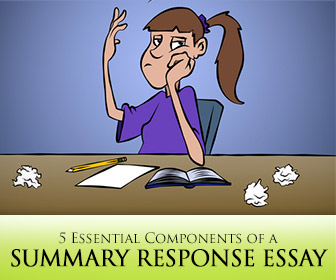
- All topics A-Z
- Grammar
- Vocabulary
- Speaking
- Reading
- Listening
- Writing
- Pronunciation
- Virtual Classroom
- Worksheets by season
- 600 Creative Writing Prompts
- Warmers, fillers & ice-breakers
- Coloring pages to print
- Flashcards
- Classroom management worksheets
- Emergency worksheets
- Revision worksheets
- Resources we recommend
- Copyright 2007-2021 пїЅ
- Submit a worksheet
- Mobile version

Unit 3: Summarizing and Responding to Writing
18 Combining a Summary and Response
One way to explore a topic is to read and respond to an article. Such an assignment typically begins with a summary of the article followed by a response to idea(s) in the article. The format of a summary response assignment can vary depending on the course and instructor, but it is a common type of academic assignment.
Three steps in a summary-response assignment:
- Begin with a summary of the article. This will familiarize the audience with the context of your response.
- Include an introduction to the response. Identify an idea by quoting the idea and then paraphrasing the idea.
- Explain your response to the idea. Through one or more of the response techniques, explain your reaction to the idea.
Format for introducing a response: Quote + paraphrase + response
Look at the beginning of the response below. Notice the required components:
- Citation (author’s name and page number)
- Paraphrase of the quote
- The start to the response
Notice that the example follows this format:
- Last name (date) writes, “Exact quote here” (p. X). In other words, … (paraphrase of this idea). I find this topic / idea / concept / example interesting because…
Stems for introducing a summary
The sentence stems below can help you develop your command of more complex academic language.
- In “article title” author’s first name and last name (year) examines /discusses /claims…. main idea.
Stems for narrowing the scope in a selective summary
- In particular, Gambino ______.
- More specifically, Gambino ______.
- Gambino focuses on ______.
- In their discussion / analysis / etc., Gambino ______.
Stems to begin your response: (you are not limited to these and you can modify them):
- Last name (date) writes, “Exact quote here” (p. X). In other words, … (paraphrase of this idea). I find this topic/idea/concept/example interesting because…
- The first topic I’d like to discuss is … (identify the topic). Last name (date) states, “Exact quote here” (p. X). In other words, … (paraphrase of this idea). I was surprised with this finding…..
- One important idea concerns … (identify the idea). Last name (date) indicates, “Exact quote here” (p. X). In other words, … (paraphrase of this idea). In my experience…
- Another critical issue I’d like to address is … (identify the issue). Last name (date) points out, “Exact quote here” (p. X). In other words, … (paraphrase of this idea). This reminds me of when…
- (Identify the topic) … is very interesting to me. Last name (date) suggests, “Exact quote here” (p. X). In other words, … (paraphrase of this idea). This example can be compared to…
Note: you do NOT need to include the title in the beginning of your response because you already included the title in the summary section.
Stem for an indirect source:
- Some people argue that … (identify the idea). X (name plus credential) said, “Exact quote here” (as cited in Name, year, p. X). In other words, … (paraphrase of this idea). I agree with them to some extent, but…
Example: Some experts point out the problems of social networking sites. Stanford University Professor Jean Anderson claims, “These sites tend to (full quote here) …” (as cited in Cook, 2019, p. 6). Anderson means here that…paraphrase…. I agree with Anderson to some extent, but…. (response).
Stems to introduce a paraphrase:
- What Anderson means is…
- Anderson means that…
- This means that…
- That is to say, …
- Anderson’s point is that…
- What s/he/they is/are suggesting/implying/saying is that…
- What Anderson wants to express is…
Stems to show agreement:
- I totally/completely agree with X about/that…
- I agree with X about…
- I find X’s perspective on …. to be quite compelling.
- I sympathize with the author’s point about…
Stems to show concession:
- I agree with X about … to some extent, but…
- While I agree with X to some extent…
- I am not entirely in agreement with X about/that…
- My feelings on the issue are mixed. I do support X’s position on …., but I find Y’s argument about… to be equally persuasive.
Stems to show disagreement:
- I disagree with X’s point that…
- I strongly disagree with X about…
- I disagree with X’s claim that…. because…
- I disagree with X’s view that… because, as recent research has shown…
- I find it surprising that …… . I just can’t believe that….. .
Stems to introduce examples, personal experience, and comparisons:
- This example makes me think about…
- Based on my experience, …
- This reminds me of…
- This makes me think of…
Vocabulary alternatives:
- For topic : idea, concept, example, issue, problem, challenge, obstacle…
- For adjectives to modify the topic: important, significant, critical, interesting, first, second, next, another
Academic Writing I Copyright © by UW-Madison ESL Program is licensed under a Creative Commons Attribution-NonCommercial-NoDerivatives 4.0 International License , except where otherwise noted.
Share This Book
- Skip to right header navigation
- Skip to main content
- Skip to primary sidebar

Best Summary and Response Essay Strategies for Student Writers

July 13, 2020 // by Lindsay Ann // 3 Comments
Sharing is caring!
Have you tried summary and response essays in your English language arts classroom? In this post, we’ll explore the benefits of summary and response, and I’ll offer questions you can use to help your students find just what they want to say in a They Say, I Say assignment.
It is my hope as an English teacher that my students will write with frequency and with voice .
To this end, I frequently ask them to compose written responses to various texts we read in class, from short stories, to poems, to nonfiction articles.
Goals of a Summary and Response Essay
First, I want students to closely read the text . This means reading (and re-reading) for critical understanding of the text, making marginal notes, and marking important passages. As students closely read, they should be thinking about the author’s message, style, and impact on them as readers .
Although a summary-response paper may be intended to demonstrate that students have read the required text(s), I want more than simple reading comprehension .
I want students to think critically.
Therefore, I teach students to read for comprehension so that they can join the conversation started by the author.
In this conversation, students must be prepared to respond and evaluate, adding unique thought and analysis prompted by the original text, extending the author’s thoughts with their own . This is what summary and response essay writing is all about.
To state it simply, I often use the analogy of a dinner table conversation. I tell students that reading a text is like pulling up a chair to the dinner table (the text is the main course). To join the dinner conversation, they must be unique, they must do more than summarize the original text, and they must spend time thinking .
Summary Writing Tips
Writing a summary is a lot like the “echo back” step in a good conversation. It’s a check for understanding. Before I move on to add my own thoughts into the conversation, I want to make sure that first I am hearing and understanding what the other person is saying.

This is the “they say” part of response writing.
➡️ It should be in students’ own words. It should be brief, yet long enough to fully represent the author’s main claim and key supporting points.
❗️ Summary writing is one of the BEST ways for students to improve their reading comprehension, and with increasingly complex texts, students must learn to represent increasingly complex ideas and nuanced organizational structures used by an author to convey his or her ideas.
The first step in writing a good summary is to mark the text. I model this for students, showing them how I recognize what a paragraph or section of the text or the text as a whole is about. I talk out loud, state what I wonder and what I notice. Then I ask students to join the conversation by doing the same.
As I do this, I am emphasizing that this is a conversation students are preparing to join. We have to first understand the message that an author is saying.
- So, what is this author trying to say?
- What points is the author making?
- What organizational choices does the author use to convey his or her ideas?
- What relationships are directly stated or implied between ideas?
- What is the larger context for this conversation?
- How does the author’s message fit into the context?
- What bigger picture significance of this topic does the author discuss or imply?
All of this starts with the question of “what do you notice?”
As students make observations, I help them start to weave together these observations so that they can notice patterns and the author’s overall claim or message.
And, with practice, students begin to do this on their own in a summary and response essay.
Best Ways to Respond to a Text
➡️ After students are able to fully understand and represent the author’s ideas and convey this in the “They Say” portion of their response, we add the “I Say” portion of the response.

❗️ In the beginning of the year, we focus solely on the “They Say” in writing until students are demonstrating proficiency. As they do this, I frontload “I Say” skills through informal conversation and debates in the classroom. That way, when I ask students to formalize their thoughts in an “I Say” written response, they are ready.
For the “I Say,” it’s important to recognize the connection between written opinion and voiced response. Some students need to talk through their opinions before fully developing them in writing.
For students to be able to add their own ideas to the author’s ideas in a summary and response essay, they must first have something unique and important to say.
➡️ A sign of undeveloped thinking in response is if a student simply regurgitates the author’s ideas without extending these ideas through new examples or divergent thinking.
❗️ I want my students to say “yes, AND” or “yes, BUT” to the author. I want them to make their own opinions and examples heard as a part of the conversation as if they are sitting down to dinner with the author and discussing the focus topic in detail.
Questions for Response Writing
The following list will help students shape the thinking that they will produce in response to different texts.
➡️ For all of these suggestions, students should always connect back to the original text(s) with in-text citations, quotes and paraphrasing when appropriate ( but be careful not to over-quote or over-paraphrase – you want this paper to be based on the original text, but also a reflection of your own thinking ).
Ways to Say “Yes, And” or “Yes, But” in Response
Ask a Question:
- Pose a related question to the author and explain how the author might answer it
- Generate a question that the text prompts of you and answer it
- Generate a question that the text prompts of you, and use additional research to extend the author’s ideas
Use Comparison/Contrast:
- Compare an author’s claim to the claim(s) made in a different text or by a different author
- Show how an author’s perspective or claim is different from something else or someone else’s idea
Try Analysis:
- Explain an emotional response to the piece you had and analyze what made you have this reaction: was it something about yourself, culture, or society?
- Explain why you had a hard time connecting with a text or an author’s claim
- If responding to an older text or a different cultural text, explain how the author’s claim might function or malfunction in today’s society or your culture
- Explain how this text could be seen differently through another person’s or another theory’s perspective
- Explain how a controversy or other historical situation may have given rise to the author’s essay
- Expose how your own bias or assumptions may interfere with your reading experience
Say “Yes, And”:
- Extend one of the author’s ideas into a broader context discussion. In other words, what is this idea a part of?
- Pose an observation or realization this text sparks in you
- Pose an important word or concept and explain how the author might define it
- Examine a similar or parallel issue that this text is related to
Use Argumentation For or Against an Idea Offered by the Author:
- If you turned the subject of this text into a question on which people would vote, how would you vote – and why?
- State one of the author’s claims and bring in additional outside reasons and evidence (personal or researched) for or against this claim
- Explain your subtly different definition of a term or perspective of a claim, and why this difference, while subtle, is important
- Expose an author’s assumption or bias and explain why this assumption or bias weakens or strengthens his/her idea
Use Argumentation For or Against the Way an Author Presents Ideas:
- Evidence: Do facts and examples fairly represent the available data on the topic? Are the author’s facts and examples current, accurate?
- Logic: Has the author adhered to standards of logic? Has the author avoided, for instance, fallacies such as personal attacks and faulty generalizations?
- Development: Does each part of the presentation seem well-developed, satisfying to you in the extent of its treatment? Is each main point adequately illustrated and supported with evidence?
- Fairness: If the issue being discussed is controversial, has the author seriously considered and responded to his opponents’ viewpoints?
- Definitions: Have terms important to the discussion been clearly defined – and if not, has lack of definition confused matters?
Audience: Is the essay appropriate for its audience – does it convince who it’s intended to convince?
Wrapping Up
Thanks for reading this post! Phew, it was a long one, but I hope that you found questions that will help your students be successful with summary and response essay assignments. Please leave a comment below to let me know what you thought and if I can help!
Hey, if you loved this post, I want to be sure you’ve had the chance to grab a FREE copy of my guide to streamlined grading . I know how hard it is to do all the things as an English teacher, so I’m over the moon to be able to share with you some of my best strategies for reducing the grading overwhelm.
Click on the link above or the image below to get started!
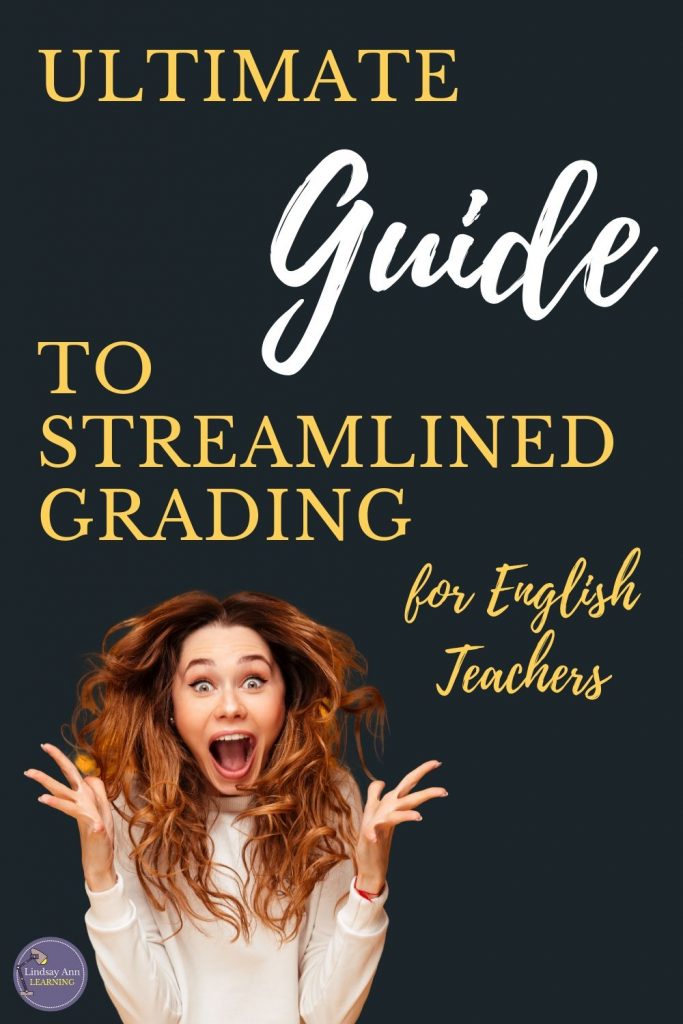
About Lindsay Ann
Lindsay has been teaching high school English in the burbs of Chicago for 18 years. She is passionate about helping English teachers find balance in their lives and teaching practice through practical feedback strategies and student-led learning strategies. She also geeks out about literary analysis, inquiry-based learning, and classroom technology integration. When Lindsay is not teaching, she enjoys playing with her two kids, running, and getting lost in a good book.
Related Posts
You may be interested in these posts from the same category.

Tardies & Chronic Absenteeism: Fighting the Good Fight

Open Ended Questions That Work

Project Based Learning: Unlocking Creativity and Collaboration

Empathy and Understanding: How the TED Talk on the Danger of a Single Story Reshapes Perspectives

Teaching Story Elements to Improve Storytelling

Effective Classroom Management Strategies: Setting the Tone for Learning

Figurative Language Examples We Can All Learn From

18 Ways to Encourage Growth Mindset Versus Fixed Mindset in High School Classrooms

10 Song Analysis Lessons for Teachers

10 Tips for Making the Most of Blended Learning

Must-Have Table Topics Conversation Starters

Warning: These 9 Mistakes Will Destroy Your MTSS

Reader Interactions
[…] reading, making marginal notes, and marking-up important passages. Teaching students how to write a summary and response as a result of their critical reading is an important next […]
[…] a “they say, I say” blog post as a way to enter the cultural conversation in response to a […]
[…] students write in a “They Say, I Say” format because our focus is cultural criticism. I want them to discover the conversation and […]
Leave a Reply Cancel reply
Your email address will not be published. Required fields are marked *
Save my name, email, and website in this browser for the next time I comment.
This site uses Akismet to reduce spam. Learn how your comment data is processed .

- Essay Guides
- Main Academic Essays
- How to Write a Response Paper: Outline, Steps & Examples
- Speech Topics
- Basics of Essay Writing
- Essay Topics
- Other Essays
- Research Paper Topics
- Basics of Research Paper Writing
- Miscellaneous
- Chicago/ Turabian
- Data & Statistics
- Methodology
- Admission Writing Tips
- Admission Advice
- Other Guides
- Student Life
- Studying Tips
- Understanding Plagiarism
- Academic Writing Tips
- Basics of Dissertation & Thesis Writing
- Research Paper Guides
- Formatting Guides
- Basics of Research Process
- Admission Guides
- Dissertation & Thesis Guides
How to Write a Response Paper: Outline, Steps & Examples

Table of contents
Use our free Readability checker
Response essays are a frequent assignment in many academic courses. Professors often ask students to share their thoughts and feelings about a variety of materials, such as books, articles, films, songs, or poems. To write an effective response paper, you should follow a specific structure to ensure that your ideas are well-organized and presented in a logical manner.
In this blog post, we will explore how to write a good outline and how it is used to develop a quality reaction essay. You will also come across a response paper example to help you better understand steps involved in writing a response essay. Continue reading to explore writing tips from professional paper writers that you can use to improve your skills.
What Is a Response Paper?
It is vital to understand the meaning of a response essay before you start writing. Often, learners confuse this type of academic work with reviews of books, articles, events, or movies, which is not correct, although they seem similar. A response paper gives you a platform to express your point of view, feelings, and understanding of a given subject or idea through writing. Unlike other review works, you are also required to give your idea, vision, and values contained in literal materials. In other words, while a response paper is written in a subjective way, a review paper is written in a more objective manner. A good reaction paper links the idea in discussion with your personal opinion or experience. Response essays are written to express your deep reflections on materials, what you have understood, and how the author's work has impacted you.

Purpose of a Response Essay
Understanding reasons for writing a reaction paper will help you prepare better work. The purpose of a response essay will be:
- To summarize author's primary ideas and opinions: you need to give a summary of materials and messages the author wants you to understand.
- Providing a reflection on the subject: as a writer, you also need to express how you relate to authors' ideas and positions.
- To express how the subject affects your personal life: when writing a response paper, you are also required to provide your personal outcome and lesson learned from interacting with the material.
Response Essay Outline
You should adhere to a specific response paper outline when working on an essay. Following a recommended format ensures that you have a smooth flow of ideas. A good response paper template will make it easier for a reader to separate your point of view from author's opinion. The essay is often divided into these sections: introduction, body, and conclusion paragraphs. Below is an example of a response essay outline template:
- Briefly introduce the topic of the response paper
- State your thesis statement or main argument
- Provide a brief summary of the source material you are responding to
- Include key details or arguments from the source
- Analyze the source material and identify strengths and weaknesses
- Evaluate the author's arguments and evidence
- Provide your own perspective on the source material
- Respond to the source material and critique its arguments
- Offer your own ideas and counterarguments
- Support your response with evidence and examples
- Summarize your main points and restate your thesis
- Provide final thoughts on the source material and its implications
- Offer suggestions for further research or inquiry

Save time and effort with our high-quality academic paper assistance. Buy college papers from experts and get an A+ with ease!
Response Paper Introduction
The success of response papers is partly dependent on how well you write the introductory paragraph. As with any academic paper, the introduction paragraph welcomes targeted readers and states the primary idea. Below is a guideline on how to start a response essay:
- Provide a compelling hook to capture the attention of your target audience.
- Provide background information about the material, including the name and author of the work.
- Provide a brief summary of main points to bring readers who are unfamiliar with the work up to task and enable them to follow up on your subsequent analysis.
- Write a thesis statement at the end of your introductory paragraph to inform readers about the purpose and argument you are trying to relay.
Response Essay Thesis Statement
A thesis statement summarizes a paper's content within a sentence or two. A response essay thesis statement is not any different! The final sentence of the introductory paragraph of a reaction paper should give readers an idea of the message that will be discussed in your paper. Do you know how to write a thesis statement for a response essay? If you follow the steps below, you should be able to write one:
- Review the material you are responding to, and pinpoint main points expressed by authors.
- Determine points of view or opinions you are going to discuss in the essay.
- Develop your thesis statement. It should express a summary of what will be covered in your reaction. The sentence should also consider logical flow of ideas in your writing.
- Thesis statement should be easy to spot. You should preferably place it at the end of your introductory paragraph.
Response Paper Body Paragraph
In most instances, the body section has between 1 and 3 paragraphs or more. You should first provide a summary of the article, book, or any other literature work you are responding to. To write a response essay body paragraph that will capture the attention of readers, you must begin by providing key ideas presented in the story from the authors' point of view. In the subsequent paragraph, you should tell your audience whether you agree or disagree with these ideas as presented in the text. In the final section, you should provide an in-depth explanation of your stand and discuss various impacts of the material.
Response Paper Conclusion
In this section of a response paper, you should provide a summary of your ideas. You may provide key takeaways from your thoughts and pinpoint meaningful parts of the response. Like any other academic work, you wind up your response essay writing by giving a summary of what was discussed throughout the paper. You should avoid introducing new evidence, ideas, or repeat contents that are included in body paragraphs in the conclusion section. After stating your final points, lessons learned, and how the work inspires you, you can wrap it up with your thesis statement.
How to Write a Response Paper?
In this section, we will provide you with tips on how to write a good response paper. To prepare a powerful reaction essay, you need to consider a two-step approach. First, you must read and analyze original sources properly. Subsequently, you also need to organize and plan the essay writing part effectively to be able to produce good reaction work. Various steps are outlined and discussed below to help you better understand how to write a response essay.

1. Pick a Topic for Your Response Essay
Picking a topic for response essay topics can be affected either by the scope of your assignment as provided by your college professor or by your preference. Irrespective of your reason, the guideline below should help you brainstorm topic ideas for your reaction:
- Start from your paper's end goal: consider what outcomes you wish to attain from writing your reaction.
- Prepare a list of all potential ideas that can help you attain your preferred result.
- Sort out topics that interest you from your list.
- Critique your final list and settle on a topic that will be comfortable to work on.
Below are some examples of good topics for response essay to get you started:
- Analyzing ideas in an article about effects of body shaming on mental health .
- Reaction paper on new theories in today's business environment.
- Movies I can watch again and again.
- A response essay on a documentary.
- Did the 9/11 terror attacks contribute to issues of religious intolerance?
2. Plan Your Thoughts and Reactions
To better plan your thoughts and reactions, you need to read the original material thoroughly to understand messages contained therein. You must understand author's line of thinking, beliefs, and values to be able to react to their content. Next, note down ideas and aspects that are important and draw any strong reactions. Think through these ideas and record potential sequences they will take in your response paper. You should also support your opinions and reactions with quotes and texts from credible sources. This will help you write a response essay for the college level that will stand out.
3. Write a Detailed Response Paper Outline
Preparing a detailed response paper outline will exponentially improve the outcome of your writing. An essay outline will act as a benchmark that will guide you when working on each section of the paper. Sorting your ideas into sections will not only help you attain a better flow of communication in your responsive essay but also simplify your writing process. You are encouraged to adopt the standard response essay outline provided in the sample above. By splitting your paper into introduction, body, and conclusion paragraphs, you will be able to effectively introduce your readers to ideas that will be discussed and separate your thoughts from authors' messages.
4. Write a Material Summary
For your audience to understand your reaction to certain materials, you should at first provide a brief summary of authors' points of view. This short overview should include author's name and work title. When writing a response essay, you should dedicate a section to give an informative summary that clearly details primary points and vital supporting arguments. You must thoroughly understand the literature to be able to complete this section. For important ideas, you can add direct quotes from the original sources in question. Writers may sometimes make a mistake of summarizing general ideas by providing detailed information about every single aspect of the material. Instead of addressing all ideas in detail, focus on key aspects. Although you rely on your personal opinion and experience to write a response paper, you must remain objective and factual in this section. Your subjective opinion will take center stage in the personal reaction part of the essay.
Example of a Response Summary
Below is a sample summary response essays example to help you better understand how to write one. A Summary of The Adventures of Robin Hood (1938)
The classic film The Adventure of Robin Hood (1938), as directed by Michael Curtis and William Keighley, stars an infamous outlaw, Robin Hood, who "robbed from the rich and gave to the poor''. The charismatic and charming Saxon lord, Robin Hood (Flynn), becomes an outlaw and seeks justice for poor people by fighting Sir Guy of Gisborne (Rathbone), Sheriff of Nottingham (Copper), and Prince John (Rains), who were oppressing people. After assembling an outlaw group, Robin defies the excessive taxes imposed on poor people by stealing from wealthy individuals and redistributing wealth to the destitute in society. Robin Hood is eventually lured into an archery tournament and gets arrested, but survives an execution. He later helps King Richard to regain his lost throne and banish Prince John.
5. Share Your Reaction
After summarizing the original material, the second part of a response paper involves writing your opinion about author’s point of view. After a thorough review of the material, you should be able to express your perspective on the subject. In this section, you are expected to detail how the material made you feel and how it relates to your personal life, experience, and values. Within the short response essay, you may also be required to state whether you agree or disagree with author's line of thinking. How does the material relate to current issues, or in what way does it impact your understanding of a given subject? Does it change your opinion on the subject in any way? Your reaction should answer these questions. In addition, you may also be required to outline potential advantages and shortcomings of the material in your reaction. Finally, you should also indicate whether or not you would endorse the literal work to others.
Reaction in Response Body Paragraph Example
Below is a reaction in a response essay body paragraph sample to help you improve your skills in writing the response body paragraph: Reaction Paragraph Example
My main takeaway from watching The Adventure of Robin Hood (1938) is that society should prioritize good and justice over laws if the set rules oppress people. Prince John, Sir Guy, and Sheriff Cooper were cruel and petty and used existing laws to oppress and exploit poor people. In response, Robin Hood employed unorthodox means and tried to help oppressed people in society. I agree with his way of thinking. Laws are made to protect people in society and ensure justice is served. Therefore, when legislation fails to serve its purpose, it becomes redundant. Even in current society, we have seen democratic governments funding coups when presidents start oppressing their people. Such coups are supported despite the fact that presidency is protected by law. Although Robin Hood's actions might encourage unlawfulness if taken out of context, I would still recommend this film because its main message is advocating for justice in the community.
6. Conclude Your Response Essay
Do you know how to write a response paper conclusion? It should be the icing on the cake. Irrespective of how good previous sections were, your reaction essay will not be considered to be exceptional if you fail to provide a sum up of your reaction, ideas, and arguments in the right manner. When writing a response essay conclusion , you should strive to summarize the outcome of your thoughts. After stating your final point, tell readers what you have learned and how that material inspired or impacted you. You can also explain how your perspective and the author's point of view intertwine with each other. Never introduce new ideas in the conclusion paragraph. Presenting new points will not only disrupt the flow of ideas in the paper but also confuse your readers because you may be unable to explain them comprehensively. You are also expected to link up your discussions with the thesis statement. In other words, concluding comments and observations need to incorporate the reaffirmation of the thesis statement.

Example of Response Paper Conclusion
You can use the responsive essay conclusion sample below as a benchmark to guide you in writing your concluding remarks: Conclusion Example
There are a lot of similarities between the film's message and my opinion, values, and beliefs. Based on my personal principles, I believe the actions of the main character, Robin Hood, are justifiable and acceptable. Several people in modern society would also agree with my perspective. The movie has provided me with multiple lessons and inspirations. The main lesson acquired is that laws are not ultimate and that we should analyze how they affect people rather than adhere to them blindly. Unless legislation protects people and serves justices, it should be considered irrelevant. Also, morality outweighs legislation. From the movie, I gathered that morality should be the foundation for all laws, and at any time, morality and greater good should be prioritized above laws. The main inspiration relates to being brave in going against some legislation since the end justifies the means sometimes. My point of view and that of the movie creators intertwine. We both advocate for human decency and justice. The argument discussed supports the idea that good and justice is greater than law.
Proofread Your Response Paper
It is important to proofread your response paper before submitting it for examination. Has your essay met all instructional requirements? Have you corrected every grammatical error in your paper? These are common questions you should be asking yourself. Proofreading your work will ensure that you have eliminated mistakes made when working on your academic work. Besides, you also get the opportunity to improve your logical flow of ideas in your paper by proofreading. If you review your work thoroughly before submitting it for marking, you are more likely to score more marks! Use our Paper Rater , it is a tool that can help you pinpoint errors, which makes going through your work even simpler.
Response Essay Examples
If you have never written this type of academic paper before, responsive essay examples should help you grasp the primary concepts better. These response paper samples not only help you to familiarize yourself with paper's features but also help you to get an idea of how you should tackle such an assignment. Review at least one written response essay example from the compilation below to give you the confidence to tackle a reaction paper. Response essay example: Book
Response paper example: Poem
Response paper sample: Movie
Example of a response paper: Article
Sample response essay: Issue
Response Paper Format
It is important to follow a recommended response essay format in order to adhere to academic writing standards needed for your assignment. Formats depend on your institution or the discipline. A reaction paper can be written in many different academic writing styles, including APA, MLA, and Chicago, with each demanding a slightly different format. The outlook of the paper and referencing varies from one writing style to another. Despite the format for a response paper, you must include introduction, body, and conclusion paragraphs.
Response Essay Writing Tips
Below are some of the best tips you can use to improve your response papers writing skills:
- Review your assignment instructions and clarify any inquiries before you start a response paper.
- Once you have selected topics for response essay, reviewed your original materials, and came up with your thesis statement, use topic sentences to facilitate logical flow in your paper.
- Always ensure that you format your work as per the standard structure to ensure that you adhere to set academic requirements. Depending on the academic writing style you will be using, ensure that you have done your in-text citation as per the paper format.
- If you have never worked on this kind of academic paper, you should review examples and samples to help you familiarize yourself with this type of work. You should, however, never plagiarize your work.
- You can use a first-person perspective to better stress your opinion or feelings about a subject. This tip is particularly crucial for reaction part of your work.
- Finally, before submitting your work, proofread your work.
Bottom Line on Response Paper Writing
As discussed in this blog post, preparing a response paper follows a two-step approach. To successfully work on these sections, you need to plan properly to ensure a smooth transition from the reading and analyzing the original material to writing your reaction. In addition, you can review previous works to improve your writing skills. So, what is a response essay that will immediately capture the attention of your instructor? Well, it should have a captivating introduction, evidence backed reaction, and a powerful conclusion. If you follow various tips outlined above and sum up your work with thorough proofreading, there is no chance that you can fail this type of assignment.
Order a response essay from our academic writing platform! Send us a ‘ write my college paper ’ message and our experienced writers will provide you with a top-notch essay according to your instructions.
FAQ About Response Paper
1. how long is a short response essay.
The length of a short response essay varies depending on topic and your familiarity with the subject. Depending on how long original sources are and how many responsive points you have, your reaction paper can range from a single paragraph of 150-400 words to multiple paragraphs of 250-500 words.
2. How to start a response body paragraph?
Use an argumentative topic sentence to start your responsive paper paragraph. Failing to begin a paragraph with an elaborate topic sentence will confuse your readers. Topic sentences give readers an idea of what is being discussed in the section. Write a responsive body paragraph for every new idea you add.
3. Is reaction paper similar to a response paper?
Yes. Reaction papers and response essays are used interchangeably. Responsive essays analyze author's point of view and compare them with your personal perspective. This type of academic writing gives you freedom to share your feelings and opinion about an idea. People also discuss how ideas, concepts, and literature material influence them in a response paper.

Daniel Howard is an Essay Writing guru. He helps students create essays that will strike a chord with the readers.
You may also like

Have a language expert improve your writing
Run a free plagiarism check in 10 minutes, generate accurate citations for free.
- Knowledge Base
- How to write an essay outline | Guidelines & examples
How to Write an Essay Outline | Guidelines & Examples
Published on August 14, 2020 by Jack Caulfield . Revised on July 23, 2023.
An essay outline is a way of planning the structure of your essay before you start writing. It involves writing quick summary sentences or phrases for every point you will cover in each paragraph , giving you a picture of how your argument will unfold.
Instantly correct all language mistakes in your text
Upload your document to correct all your mistakes in minutes

Table of contents
Organizing your material, presentation of the outline, examples of essay outlines, other interesting articles, frequently asked questions about essay outlines.
At the stage where you’re writing an essay outline, your ideas are probably still not fully formed. You should know your topic and have already done some preliminary research to find relevant sources , but now you need to shape your ideas into a structured argument.
Creating categories
Look over any information, quotes and ideas you’ve noted down from your research and consider the central point you want to make in the essay—this will be the basis of your thesis statement . Once you have an idea of your overall argument, you can begin to organize your material in a way that serves that argument.
Try to arrange your material into categories related to different aspects of your argument. If you’re writing about a literary text, you might group your ideas into themes; in a history essay, it might be several key trends or turning points from the period you’re discussing.
Three main themes or subjects is a common structure for essays. Depending on the length of the essay, you could split the themes into three body paragraphs, or three longer sections with several paragraphs covering each theme.
As you create the outline, look critically at your categories and points: Are any of them irrelevant or redundant? Make sure every topic you cover is clearly related to your thesis statement.
Order of information
When you have your material organized into several categories, consider what order they should appear in.
Your essay will always begin and end with an introduction and conclusion , but the organization of the body is up to you.
Consider these questions to order your material:
- Is there an obvious starting point for your argument?
- Is there one subject that provides an easy transition into another?
- Do some points need to be set up by discussing other points first?
Here's why students love Scribbr's proofreading services
Discover proofreading & editing
Within each paragraph, you’ll discuss a single idea related to your overall topic or argument, using several points of evidence or analysis to do so.
In your outline, you present these points as a few short numbered sentences or phrases.They can be split into sub-points when more detail is needed.
The template below shows how you might structure an outline for a five-paragraph essay.
- Thesis statement
- First piece of evidence
- Second piece of evidence
- Summary/synthesis
- Importance of topic
- Strong closing statement
You can choose whether to write your outline in full sentences or short phrases. Be consistent in your choice; don’t randomly write some points as full sentences and others as short phrases.
Examples of outlines for different types of essays are presented below: an argumentative, expository, and literary analysis essay.
Argumentative essay outline
This outline is for a short argumentative essay evaluating the internet’s impact on education. It uses short phrases to summarize each point.
Its body is split into three paragraphs, each presenting arguments about a different aspect of the internet’s effects on education.
- Importance of the internet
- Concerns about internet use
- Thesis statement: Internet use a net positive
- Data exploring this effect
- Analysis indicating it is overstated
- Students’ reading levels over time
- Why this data is questionable
- Video media
- Interactive media
- Speed and simplicity of online research
- Questions about reliability (transitioning into next topic)
- Evidence indicating its ubiquity
- Claims that it discourages engagement with academic writing
- Evidence that Wikipedia warns students not to cite it
- Argument that it introduces students to citation
- Summary of key points
- Value of digital education for students
- Need for optimism to embrace advantages of the internet
Expository essay outline
This is the outline for an expository essay describing how the invention of the printing press affected life and politics in Europe.
The paragraphs are still summarized in short phrases here, but individual points are described with full sentences.
- Claim that the printing press marks the end of the Middle Ages.
- Provide background on the low levels of literacy before the printing press.
- Present the thesis statement: The invention of the printing press increased circulation of information in Europe, paving the way for the Reformation.
- Discuss the very high levels of illiteracy in medieval Europe.
- Describe how literacy and thus knowledge and education were mainly the domain of religious and political elites.
- Indicate how this discouraged political and religious change.
- Describe the invention of the printing press in 1440 by Johannes Gutenberg.
- Show the implications of the new technology for book production.
- Describe the rapid spread of the technology and the printing of the Gutenberg Bible.
- Link to the Reformation.
- Discuss the trend for translating the Bible into vernacular languages during the years following the printing press’s invention.
- Describe Luther’s own translation of the Bible during the Reformation.
- Sketch out the large-scale effects the Reformation would have on religion and politics.
- Summarize the history described.
- Stress the significance of the printing press to the events of this period.
Literary analysis essay outline
The literary analysis essay outlined below discusses the role of theater in Jane Austen’s novel Mansfield Park .
The body of the essay is divided into three different themes, each of which is explored through examples from the book.
- Describe the theatricality of Austen’s works
- Outline the role theater plays in Mansfield Park
- Introduce the research question : How does Austen use theater to express the characters’ morality in Mansfield Park ?
- Discuss Austen’s depiction of the performance at the end of the first volume
- Discuss how Sir Bertram reacts to the acting scheme
- Introduce Austen’s use of stage direction–like details during dialogue
- Explore how these are deployed to show the characters’ self-absorption
- Discuss Austen’s description of Maria and Julia’s relationship as polite but affectionless
- Compare Mrs. Norris’s self-conceit as charitable despite her idleness
- Summarize the three themes: The acting scheme, stage directions, and the performance of morals
- Answer the research question
- Indicate areas for further study
If you want to know more about AI tools , college essays , or fallacies make sure to check out some of our other articles with explanations and examples or go directly to our tools!
- Ad hominem fallacy
- Post hoc fallacy
- Appeal to authority fallacy
- False cause fallacy
- Sunk cost fallacy
College essays
- Choosing Essay Topic
- Write a College Essay
- Write a Diversity Essay
- College Essay Format & Structure
- Comparing and Contrasting in an Essay
(AI) Tools
- Grammar Checker
- Paraphrasing Tool
- Text Summarizer
- AI Detector
- Plagiarism Checker
- Citation Generator
Prevent plagiarism. Run a free check.
You will sometimes be asked to hand in an essay outline before you start writing your essay . Your supervisor wants to see that you have a clear idea of your structure so that writing will go smoothly.
Even when you do not have to hand it in, writing an essay outline is an important part of the writing process . It’s a good idea to write one (as informally as you like) to clarify your structure for yourself whenever you are working on an essay.
If you have to hand in your essay outline , you may be given specific guidelines stating whether you have to use full sentences. If you’re not sure, ask your supervisor.
When writing an essay outline for yourself, the choice is yours. Some students find it helpful to write out their ideas in full sentences, while others prefer to summarize them in short phrases.
You should try to follow your outline as you write your essay . However, if your ideas change or it becomes clear that your structure could be better, it’s okay to depart from your essay outline . Just make sure you know why you’re doing so.
Cite this Scribbr article
If you want to cite this source, you can copy and paste the citation or click the “Cite this Scribbr article” button to automatically add the citation to our free Citation Generator.
Caulfield, J. (2023, July 23). How to Write an Essay Outline | Guidelines & Examples. Scribbr. Retrieved March 26, 2024, from https://www.scribbr.com/academic-essay/essay-outline/
Is this article helpful?

Jack Caulfield
Other students also liked, how to create a structured research paper outline | example, a step-by-step guide to the writing process, how to write an argumentative essay | examples & tips, what is your plagiarism score.
Writing a Summary-Response
LESSON In this lesson, you will learn to write a summary-response A writing that combines a summary of a reading with personal thoughts and opinions about the reading. , which combines both a summary A brief restatement of an author’s main idea and major supporting details. Summaries are factual and should be written in the third-person with an objective point of view. of a reading A piece of writing to be read. A reading can either be a full work (i.e., a book) or partial (i.e., a passage). with your personal thoughts and opinions Point of view that shows a personal belief or bias and cannot be proven to be completely true. about the reading. It is not a formal paper An academic essay that usually includes research and citations. or essay A short piece of writing that focuses on at least one main idea. Some essays are also focused on the author's unique point of view, making them personal or autobiographical, while others are focused on a particular literary, scientific, or political subject. in the sense that it will not have an introduction The first paragraph of an essay. It must engage the reader, set the tone, provide background information, and present the thesis. , body The main portion of a writing that contains the main ideas and supporting details of the writing. This is where the author's purpose and thesis statement are supported and/or developed. , or conclusion The end portion of a writing that contains a summary or synthesis of the idea in the work. This includes a recap of key points and reminders of the author's purpose and thesis statement. . Instead, it consists of two distinct parts: a summary of the reading followed by your response A written analysis of a reading that shows understanding and fosters deep thinking about a work. to the reading. Each part is usually a paragraph A selection of a writing that is made up of sentences formed around one main point. Paragraphs are set apart by a new line and sometimes indentation. and the length of each paragraph depends on the length of the reading being addressed. For instance, if a reading is only a few paragraphs long, the summary-response would be two paragraphs, each with approximately four to five sentences.
It is important to keep in mind that the two paragraphs are distinct. The summary paragraph is a brief restatement of the author's main idea The most important or central thought of a reading selection. It also includes what the author wants the reader to understand about the topic he or she has chosen to write about. and supporting details Statements within a reading that tie directly to major details that support the main idea. These can be provided in examples, statistics, anecdotes, definitions, descriptions, or comparisons within the work. . It does not include your opinion. Your opinion goes in the response paragraph where you state your thoughts about the author A person who wrote a text. 's main idea and use supporting details from your own experience to explain your thoughts.
Summary-Response Process
Use a four-step process to write a summary-response of a reading. Step 1: Identify the main idea of the reading. For the summary paragraph, create a topic sentence A sentence that contains the controlling idea for an entire paragraph and is typically the first sentence of the paragraph. that identifies the main idea of the reading. Then, for the response paragraph, create a separate thesis statement A brief statement that identifies a writer's thoughts, opinions, or conclusions about a topic. Thesis statements bring unity to a piece of writing, giving it a focus and a purpose. You can use three questions to help form a thesis statement: What is my topic? What am I trying to say about that topic? Why is this important to me or my reader? that states your opinion about the author's main idea.
Step 2: Identify the supporting details for the summary and for the response. The next step is to identify the supporting details of the reading. In the summary paragraph, it is important to maintain the order of these supporting details. Once you note these points, consider how they relate to the author's main idea. Then, develop the supporting details for the response paragraph, showing how your own personal experience supports the thesis statement created in Step 1. Step 3: Identify the author's purpose The reason the writer is writing about a topic. It is what the writer wants the reader to know, feel, or do after reading the work. for writing. As part of the summary paragraph, ask yourself, "Why did the author write this? What did the author want me to know, think, or do after reading this?" As part of the response paragraph, address whether or not the author was successful achieving his or her purpose. Step 4: Write a summary-response of the reading. Bring Steps 1, 2, and 3 together to write the summary and the response paragraphs. The following is one way you could do this:
Summary Paragraph
Sentence 1: Introduce the reading, stating the title and the author's name. You should also state the author's main idea. This may be as simple as adding the title and author to your topic sentence from Step 1.
Sentence 2: Write supporting sentences (or sentence) describing the supporting details of the reading you noted in Step 2 in order.
Sentence 3: Write a sentence that brings this information together and states the author's reason for writing that you noted in Step 3.
Response Paragraph
Sentence 1: Clearly state your opinion or thoughts about the author's main idea. Use the thesis statement you created in Step 1. Ask yourself, "How does my own thought/opinion about the reading relate to the author's main idea?"
Sentence 2: Write supporting sentences (or a sentence) describing how your personal experience supports your opinion or thought about the author's main idea.
Sentence 3: Write a sentence that brings this information together and states how your opinion or thought relates to the author's main idea.
Writing a summary-response is a skill you can use when thinking critically about an article A non-fiction, often informative writing that forms a part of a publication, such as a magazine or newspaper. in a newspaper, an editorial blog A website that hosts a series of articles, photos, and other postings, sometimes by a single writer (blogger) or by a community of contributors. , or any assigned reading in a class. In fact, it is a common assignment in many college classes. You can also use the same skills to help you write a cover letter A letter that is sent along with a resume that provides context and more information for the reader. when applying for a job where you must not only show an understanding of the job you are applying for, but also show how your experience makes you the best candidate for that position.
Read the following passage A short portion of a writing taken from a larger source, such as a book, article, speech, or poem. and see an example of how to use the Summary-Response Process to summarize and respond to a reading with complete, concise Describes writing that only uses words that are necessary for clarity, meaning, and interest. paragraphs.
Mile-High Home By Douglas Peters
There are many cities throughout the world that are alluring and exotic, but if you're looking for the best place to raise a family in the United States, Denver, Colorado is the place you want to be. From skiing in the winter to camping and hiking in the summer, there are plenty of year-round outdoor recreation activities for the entire family. It also has a strong local economy with many job sectors represented, so that even when the economy goes down elsewhere, Denver remains stable with plenty of good jobs that support the financial needs of any family. Finally, it has great public and private schools and many colleges and universities within a short drive of downtown so that people of all ages can fulfill their educational goals. All this, plus seven professional sports teams and an exciting urban nightlife—it's no wonder people from all over the world make Denver a new home for their families.
Step 1: Identify the main idea of the reading.
First, create a topic sentence that identifies the main idea of the reading.
Topic sentence: Denver is a good place to raise a family.
Now, create a separate thesis statement that states your opinion about the author's main idea.
Thesis statement: I agree with the author because I like Denver and have lived there most of my life.
Step 2: Identify the supporting details of the reading and for the response.
Next, identify the supporting details of the reading for the summary paragraph.
Supporting details of the reading for the summary: Denver has great outdoor recreation, good jobs and schools, and lots of entertainment options.
Now, develop the supporting details for the response paragraph, showing how your own personal experience supports the thesis statement created in Step 1.
Supporting details for the response paragraph: I do all the activities the author lists. I have a ski pass for the winter and try to go mountain biking every weekend. I am also a Broncos football fan. I am a graduate of the schools there and now I work as a realtor in the downtown area.
Step 3: Identify the author's purpose for writing.
In this step, answer the questions, "Why did the author write this? What did the author want me to know, think, or do after reading this?" Then, write down whether or not the author was successful achieving his purpose.
These are all good things to have for a family and the author thinks that people ought to consider moving to Denver. I think the author was successful in pointing out some good things about living in Denver.
Step 4: Write a summary-response of the reading.
Finally, bring Steps 1, 2, and 3 together and write the summary paragraph and the response paragraph. Remember to introduce the reading in the first paragraph by stating the title and the author's name.
"Mile-High Home," by Douglas Peters, describes Denver, Colorado as an ideal city for people to raise a family. The article points out that the city has great outdoor recreation, good jobs, and good schools, all of which are important to families. It makes it seem ideal and Mr. Peters seems to encourage people to move there to raise their families.
I agree with the author because I like Denver and have lived there most of my life. In fact, I do all of the things listed in the article; I have a ski pass for the winter and I try to go mountain biking every weekend. Of course, I cheer for the home team and am an avid Broncos football fan. I am also a graduate of the schools there and now work as a realtor in the downtown area. I can definitely say that Denver is a great place for families.
Read the following passage and then complete the Summary-Response Process to summarize and respond to the reading with complete, concise paragraphs.
Time in School By Douglas Peters
Choosing to go to college is a good choice, but many people fail to take into account how much time is required outside of class in order to succeed. The main confusion is found in what I like to call the 80/20 rule. In high school, 80 percent of instruction and learning is done in the classroom and 20 percent is done at home. In college, this ratio flips to where just 20 percent of instruction and learning is done in the classroom while a full 80 percent is expected to be done at home. Planning for this kind of commitment requires students to take an honest look at what they do every day and exactly where they will fit all the work into their schedules. With so many students balancing work and family with college careers, it has become even more important for students to make sure they plan accordingly so they can do their very best in college.
Sample Answer
Going to college takes more time than most people expect.
I agree with the author because I found out the hard way and fell behind my first semester.
The author points out the "80/20 rule," which states that college classes require much more homework than people are used to in high school. Since many students work and have families, the author encourages future college students to schedule time to do homework before starting classes.
I was working at a restaurant and they would not respect the time I needed for school and would even schedule me during my classes. This meant that not only did I not have time to do homework, but I would miss class often, as well. I was able to find a different restaurant to work at and I am now able to schedule my shifts to fit my school schedule, which is what the author suggests.
Students should be prepared for the time commitment of college.
"Time in School," by Douglas Peters, shows how college usually takes a greater time commitment than most people expect. The author points out the "80/20 rule," which basically states that college classes require much more homework than people are used to in high school. Since many students work and have families, the author encourages future college students to schedule time to do homework before starting classes.
I completely agree with the author because I found out the hard way that college takes more time than I thought it would and fell behind my first semester. I was working at a restaurant and they would not respect the time I needed for school and would even schedule me during my classes. This meant that not only did I not have time to do homework, but I would miss class often, as well. Luckily, I found a different restaurant to work at and I am now able to schedule my shifts to fit my school schedule, which is exactly what Mr. Peters suggests.
The topic sentence in the summary paragraph says what the author thinks about the topic. The thesis statement is what I think about the topic.
You would see book and art reviews in newspapers or culture magazines, movie and TV reviews are written by bloggers online, and album reviews can be found in magazines or online, as well.
Copyright ©2022 The NROC Project
- AI Content Shield
- AI KW Research
- AI Assistant
- SEO Optimizer
- AI KW Clustering
- Customer reviews
- The NLO Revolution
- Press Center
- Help Center
- Content Resources
- Facebook Group
A Guide to Effective Summary Response Essays
Table of Contents
If you’ve been tasked to write a summary response essay but are unsure where to start, don’t worry. We’ve got you covered with this quick guide on the basics of summary response essays. We’ll cover everything from its definition and writing tips to a sample outline for summary response essay .
This is a less common type of essay that requires a certain style and approach that differs from other types of essays. But with the help of this guide, you’ll be able to make the writing process much easier.
What is a Summary Response Essay
Summary response essays are two-part essays that include a summary of an article, essay, chapter or report and a response to it.
It is not a formal paper or essay because it does not have an introduction, body, or conclusion like other essays. This type of essay instead consists of a summary of the reading followed by a response to the reading.
To better understand this type of essay, it’s best to look at its two parts separately in the next section.
What to Include in Your Essay
The summary is a concise round-up of all the main ideas in an essay or writing. It cites all the relevant details about the work you’re reviewing. Your summary can include the following:
- Author and the work’s title (typically in the first sentence).
- The thesis of the essay and its supporting ideas
- It may use direct quotations to provide forceful or concise statements of the author’s ideas
Most summaries present the main points in the order they were made by the author and continually referred back to the article being summarized. Your summary should not exceed one-third the length of the original work.
Responses are critiques or evaluations of an author’s work. Unlike the summary, it is composed of YOUR opinions for the article being summarized.
This examines ideas that you agree or disagree with. It identifies the work’s strengths and weaknesses by looking at its organization and style. You should use examples and evidence to support the opinions in your response.
A good response must contain
- Personal experiences
Depending on your stance, these can either refute or support the article you’re responding to.
Steps for Writing a Summary Response Essay
Identify the main idea of the reading .
Create a topic sentence that describes the main idea of your reading for your summary. For your response, create a separate thesis statement that states your opinion on the author’s main idea.
Add supporting details for the summary and response.
Next, identify the supporting facts of the reading. In the summary paragraph, it is important to keep the order of the supporting details. Consider how these points relate to the author’s main idea.
Develop the supporting details for the response paragraph, highlighting how your evidence or personal experience supports the thesis statement you’ve created.
Identify the author’s purpose for writing.
It’s helpful to get to know the goal that the author wants to achieve through their work.
For your summary, try to ask yourself:
- Why did the author write this?
- Is there anything specific that the author wants me to know?
- Does the author want me to do something after reading this?
And in your response, discuss whether or not the author was successful in achieving the goal of their work.
Write a summary response to the reading .
Given all the data you’ve gathered from the first three steps, you can start writing your summary and the response paragraphs. Make sure to include all the necessary information and be detailed but not flowery.
General Outline for Summary Response Essay
Summary paragraph.
- Provide the title and author’s name to introduce the work the essay will discuss. Additionally, state the author’s main idea.
- Write supporting sentences that describe the supporting details of the work .
- Let this information come together in a sentence that explains the author’s reason or goal for writing the piece.
Response Paragraph
- Clearly state your opinions or thoughts about the author’s main idea. Use the thesis statement you created in the earlier steps. You can also ask yourself: Does my opinion regarding the reading relate to the author’s main idea?
- Put your personal experience into a supporting sentence (or sentences) describing how your opinion or thoughts support or go against the author’s main idea.
- Write a sentence summarizing this information and explain how your opinion or thought relates to the author’s main idea.
Wrapping Up
A summary response essay typically includes a summary of the reading followed by your thoughts and reactions. It may seem like a long and daunting task, but with a little guidance, you can be confident you’re up for the challenge.
Use the writing tips and outline for summary response essay sample in this essay to help you easily get started!

Abir Ghenaiet
Abir is a data analyst and researcher. Among her interests are artificial intelligence, machine learning, and natural language processing. As a humanitarian and educator, she actively supports women in tech and promotes diversity.
Explore All Essay Outline Tool Articles
How to write a synthesis essay outline.
One of the most interesting assignments you could have is writing a synthesis essay. For a college or university student,…
- Essay Outline Tool
Learning the Structure of an Informational Essay
Academic writing assignments, primarily essays, are required of all college and university students. That’s because they think it will aid…
The Correct Way to Structure an Article
Writing non-fiction has a set format that can be followed, which makes it not all that different from writing fiction.…
Exploring the Structure of a Response Essay
You will typically be expected to write in a formal and impersonal voice when you are given the assignment of…
Writing a Persuasive Essay? Use This Structure!
Writing essays is a requirement of your academic program as a college student. Whether you love them or loathe them,…
Writing a Proposal Essay? Read This!
Are you writing a proposal essay? To write it correctly, we have to know what a proposal essay actually is.…
The Federal Register
The daily journal of the united states government, request access.
Due to aggressive automated scraping of FederalRegister.gov and eCFR.gov, programmatic access to these sites is limited to access to our extensive developer APIs.
If you are human user receiving this message, we can add your IP address to a set of IPs that can access FederalRegister.gov & eCFR.gov; complete the CAPTCHA (bot test) below and click "Request Access". This process will be necessary for each IP address you wish to access the site from, requests are valid for approximately one quarter (three months) after which the process may need to be repeated.
An official website of the United States government.
If you want to request a wider IP range, first request access for your current IP, and then use the "Site Feedback" button found in the lower left-hand side to make the request.
Morning Rundown: Gaza hospital in ruins after IDF ends raid, Powerball nears $1 billion, and N.Y. prisons lock down for solar eclipse
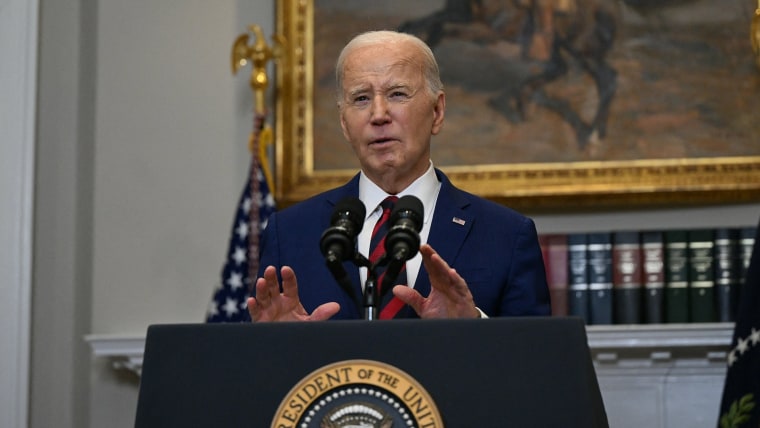
Special report: Biden discusses response to Baltimore bridge collapse
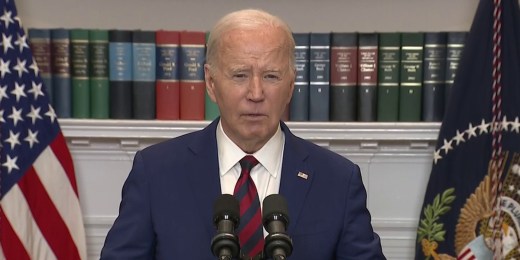
Biden on bridge collapse: 'The people of Baltimore can count on us'

Supreme Court appears skeptical of challenge to abortion pill mifepristone

House passes $1.2 trillion spending bill but Senate must still act

Medication abortions rise after Roe v. Wade was struck down

Supreme Court allows aggressive Texas migrant law to take effect
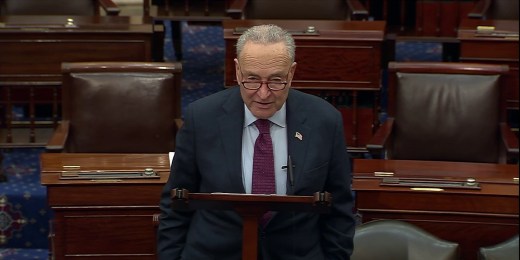
Schumer condemns Trump for claiming Jews who vote for Democrats hate Israel

Supreme Court rejects Peter Navarro’s bid to avoid prison
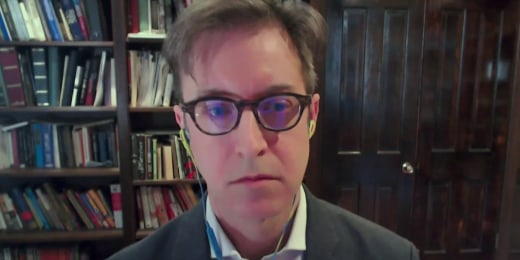
Supreme Court: self-preservation at democracy’s expense, says Kermit Roosevelt
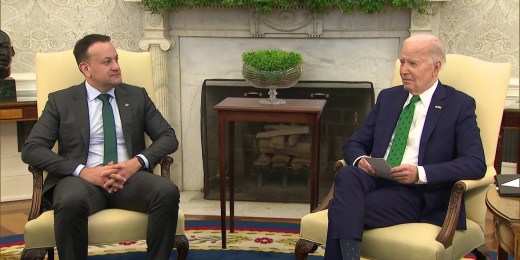
Biden meets with Irish prime minister at the White House

McConnell calls move to curb judge-shopping 'an unforced error'
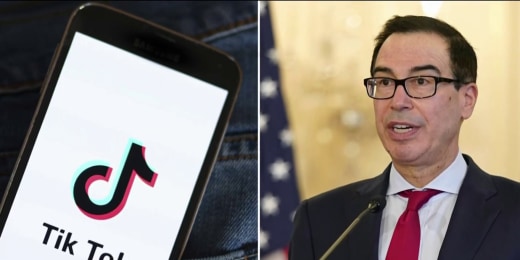
Former Treasury Secy. Mnuchin says he's putting together a group to buy TikTok

Sanders calls for four-day workweek at Senate hearing

Full speech: Sen. Schumer calls for new elections in Israel
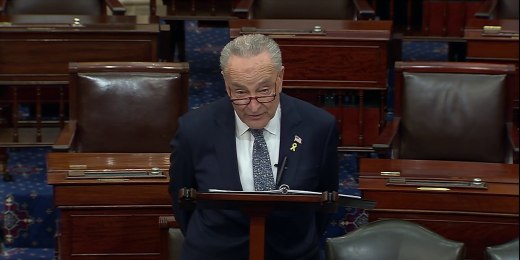
Schumer: Netanyahu 'no longer fits the needs of Israel'
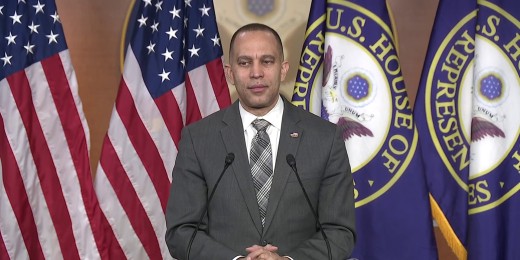
Jeffries: House passed TikTok bill in 'decisive and bipartisan fashion'
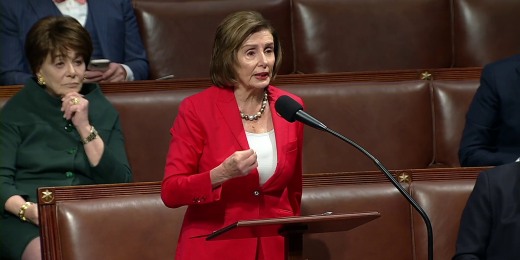
Pelosi: House bill is an ‘attempt to make TikTok better’

GOP Rep. Massie says TikTok bill would not address 'root problems'

House passes bill that could ban TikTok

Inside the Oregon city at the center of the Supreme Court's homelessness case
President Biden delivered remarks to address the collapse of a major bridge in Baltimore after it was struck by a cargo ship. The president discussed the ongoing response, search for those unaccounted for, and his intent for the federal government to pay for the reconstruction of the bridge. March 26, 2024
Best of NBC News

NBC News NOW
Trump to hold mar-a-lago fundraiser to compete with biden fundraising effort.

Video shows the scale of destruction at Gaza’s Al-Shifa Hospital after Israeli withdrawal

Palestinian Christians attend Easter Mass in Gaza City
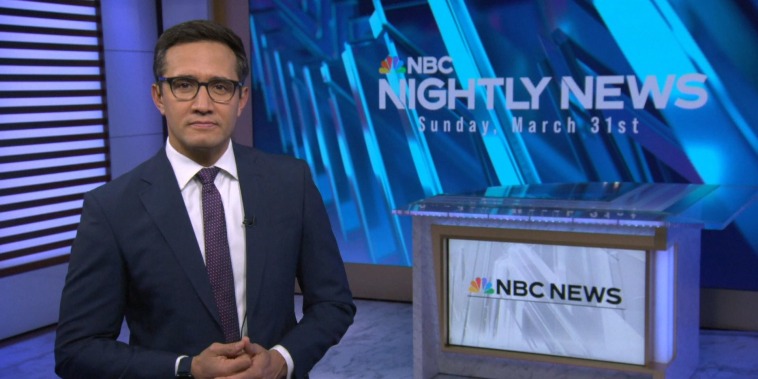
Nightly News Netcast
Nightly news full broadcast (march 31st).

Audio reportedly captures GOP Rep. Walberg discussing conflict in Gaza

Nightly News
Nyc becomes first american city to approve congestion pricing.
- Share full article

The Dogs Helping the Covenant Children Find Their Way Back
To heal after a mass shooting, the Covenant School families have turned to therapy, faith, one another — and a lot of dogs.
Monroe Joyce, 10, runs with one of two dachshunds taken in by her family. She is one of several children who now have a dog after surviving the Covenant School shooting. Credit...
Supported by

By Emily Cochrane
Photographs by Erin Schaff
Emily Cochrane and Erin Schaff spoke with more than a dozen Covenant School parents, students, staff and their dogs.
- Published March 24, 2024 Updated March 28, 2024
Two of April Manning’s children, Mac and Lilah, had just survived the mass shooting at the Covenant School in Nashville. They needed stability and time to grieve.
Listen to this article with reporter commentary
Open this article in the New York Times Audio app on iOS.
So she did everything she could to keep the family dog, Owen, their sweet but ailing 15-year-old golden retriever, with them for as long as possible. She pushed back his final trip to the vet, keeping him comfortable as he slowly moved around the house.
Getting another dog was the furthest thing from her mind. But a few weeks after the shooting, her children sat her down for an important presentation.
Prepared with a script and a PowerPoint — “Why We Should Get (Another) Dog” — they rattled through research showing the mental health benefits of having one. It could limit their chances of developing PTSD and help them feel safe. Playing together would get them outside and boost their happiness.
Ms. Manning and her husband considered. Maybe a second dog was possible.

First came Chip, a Cavalier King Charles spaniel. Then, after Owen succumbed to old age, came Birdie, a miniature poodle and Bernese Mountain dog mix. And in taking them in, the Mannings were far from alone.
In the year since Tennessee’s worst school shooting, in which three third-graders and three staff members were killed by a former student, more than 40 dogs have been taken in by families at Covenant, a small Christian school of about 120 families.
“I really only expected them to help in a cuddly kind of way, like just to snuggle the kids when they’re upset ,” Ms. Manning said. “But I wasn’t really expecting all the other benefits from them.”
To spend time with the Covenant families is to understand how they have relied on one another, traditional psychological treatments and mental health counseling, and their Christian faith to hold them together.
But it is also to see how often what they needed — a distraction, a protector, a friend who could listen, something untouched by darkness — came from a dog.
An Immediate Response
Dogs greeted the surviving children at Sandy Hook Elementary School as they returned to a refurbished middle school in 2013. A dozen golden retrievers were on hand in Orlando to provide comfort after the deadly attack at a L.G.B.T.Q. nightclub in 2016. The therapy dogs who tended to the surviving students in Parkland, Fla., made the school yearbook .
“Over this period of sort of, 35,000 years, dogs have become incredibly adept at socializing with humans, so they’re sensitive to our emotional state,” said Dr. Nancy Gee, who oversees the Center for Human-Animal Interaction at Virginia Commonwealth University.
Even brief, minute-long interactions with dogs and other animals can reduce cortisol, the body’s stress hormone, research by Dr. Gee and others has shown, providing a possible lifeline for veterans struggling with PTSD and others recovering from trauma.
And on the day of the Covenant shooting, dogs were immediately there to help. Covey, the headmaster’s dog, was at a nearby firehouse, where dozens of staff members and students were evacuated. Squid, a retriever mix, was at the children’s hospital at Vanderbilt University Medical Center, helping to comfort the staff if needed.
When the students who survived were put on a school bus to be reunited with their anguished parents, Sgt. Bo, a police dog, was sitting at their side.
Officer Faye Okert, the dog’s handler with the Metro Nashville Police, handed out a baseball card of dog facts to distract and comfort the children.
“The focus was on him,” said Officer Okert. “You had smiles after what they had been through.”
After families reunited, counselors offered clear advice: To help your child, get a dog. Or borrow a neighbor’s.
That led several parents to connect with Comfort Connections, a nonprofit comfort dog organization. Jeanene Hupy, the group’s founder, had seen firsthand how therapy dogs had helped the Sandy Hook students and started her own organization once she moved to Nashville.
The group, which oversees a menagerie of golden retrievers, a gentle pit bull and a massive English mastiff, began its work by visiting individual homes in the days after the shooting. Then, when students returned to class weeks later, the dogs were once again there.
They were something to look forward to, in the moments when walking through the school doors felt overwhelming. And when there were painful reminders — a water bottle clattering to the floor, an unsettling history lesson on war or the absence of a friend — a child could slip away and cuddle a dog.
As Ms. Hupy put it, something special happens “when you bring in something that loves you more than it loves itself, which is these guys.”
A Reassuring Presence
First it was a joke, then a reality: Everyone was getting a dog.
Fueled by community donations and her own money, Ms. Hupy began connecting several parents and puppies. Even for families who could easily afford a new dog, Ms. Hupy and her trainers dramatically eased the logistical hurdles by finding and training puppies that seemed perfect fits to each family.
The Anderson girls shrieked and cried with joy when they learned they were getting a dog, and have now taught Leo how to flaunt sunglasses and do tricks. The Hobbs children constantly scoop up Lady Diana Spencer, often fashionably dressed in a string of pearls or sweaters.
The dogs are also there in the harder moments, too, like when an ambulance or police car drives by blaring its siren or when the memorial ribbons in their neighborhood remind them of what was lost.
“Sometimes it’s just nice to have a giant soft pillow that doesn’t need to talk to you and just cuddle it,” said Evangeline Anderson, now 11.
And if the dogs chew on a shoe or make a mess on a rug, Ms. Manning said, it is a lesson in how to deal with conflicting emotions.
“We still love them and we’re so glad we have them — both things can be true,” she said. “Just like we can be really nervous about going back to school and still also be excited to do it.”
And maybe, the parents realized, it was not just for the children.
Rachel and Ben Gatlin were driving back from vacation on the day of the shooting. That has meant grappling with the heaviness of survival and knowing that Mr. Gatlin, a history teacher who carried a pistol on his ankle for personal protection, could have run toward the shooter that day.
And while their new dog, Buddy, has adapted to the bossiness of their young children and has developed a penchant for sock consumption, he has also kept the adults’ thoughts focused in the moment. Tending to his needs has served as a reminder of their own.
“When you see it working, you’re in total comfort,” Ms. Gatlin said.
Even the school’s chaplain, Matthew Sullivan, found that the stories of new puppies being shared each day in chapel were “wearing me down in a good way.”
“I kind of wanted to enter into the experience of all these families firsthand,” he said.
Now Hank, a slightly anxious, floppy-eared Scooby-Doo doppelgänger, has been adopted into his home, which had been a little empty without his grown children.
The Alternatives
Not everyone got a dog.
For the McLeans, the solution was two rabbits.
“It’s an incredible distraction to their reality,” Abby McLean said of her children, cupping her hands to mimic cradling a rabbit on her shoulder. “I find myself occasionally doing it as well.”
Another family added Ginny, a tortoise with a possible seven-decade life span, to the mix of animals already in their house.
“For having lost people early in life — there was something that equated to me in that, that there was a longevity to it, to a tortoise,” said Phil Shay, who picked out the tortoise with his 12-year-old daughter, Ever.
Still, the dogs far outnumber the other pets. And every day they can make a little difference.
The first night that George, Jude and Amos Bolton had tried to sleep alone without their parents after the shooting, the slightest grumble from the ice machine or the dryer had been too much. Their mother, Rachel, who had maintained that she liked dogs, just not in her house, soon agreed to take in Hudson, a miniature Goldendoodle puppy with doe-like eyes and wild curls.
“We didn’t realize the dogs could create comfort for people,” Jude, now 10, said, his hands ruffling Hudson’s ears. And when Hudson came home, he added, “he’s just been comforting us ever since.”
It is now easier to sleep through the night, safe with the knowledge that Hudson is there.
“All my friends joke, they’re like, ‘I can’t believe you’re a dog person now,’” Ms. Bolton said. But this dog, she added, “has healed this family.”
Read by Emily Cochrane
Audio produced by Patricia Sulbarán .
Emily Cochrane is a national reporter for The Times covering the American South, based in Nashville. More about Emily Cochrane
Erin Schaff is a photojournalist for The Times, covering stories across the country. More about Erin Schaff
Advertisement

IMAGES
VIDEO
COMMENTS
Writing Effective Summary and Response Essays. The Summary: A summary is a concise paraphrase of all the main ideas in an essay. It cites the author and the title (usually in the first sentence); it contains the essay's thesis and supporting ideas; it may use direct quotation of forceful or concise statements of the author's ideas; it will NOT usually cite the author's examples or supporting ...
A summary response essay summarizes and responds to an author's argument on a particular subject or issue. Firstly, this requires careful, faithful explanation of what the author is actually saying in the "summary" part of your essay, even if you disagree with their premise,
Identify the author (s) and the piece of writing that is being addressed. Give a brief summary that highlights the key parts, tone, arguments, or attitude. This may or may not include direct quotations. Critically evaluate the piece of writing. Depending on the task, this could include any sort of response, including but not limited to ...
To effectively summarize an essay, follow these steps: 1 Read the essay: Fully read the essay to understand its main argument and structure. As you do this, identify the essay's thesis statement and main arguments, which will be featured in your summary. 2 Identify main points: Pinpoint the key points and arguments within the essay.
Summary Writing Steps. A summary is telling the main ideas of the article in your own words. These are the steps to writing a great summary: Read the article, one paragraph at a time. For each paragraph, underline the main idea sentence (topic sentence). If you can't underline the book, write that sentence on your computer or a piece of paper.
Summary/Response Essays: Overview A summary/response essay may, at first, seem like a simplistic exercise for a college course. But the truth is that most academic writing requires us to successfully accomplish at least two tasks: summarizing what others have said and presenting what you have to say. Because of this, summarizing and responding ...
Summary, Analysis, Response Papers Include: 1. A summary of the argument. 2. An analysis of whether the argument is written effectively. 3. A personal response. No one knew at the time, but 1948 launched three men toward their destinies. John F. Kennedy in 1947.
The summary response essay is a tried-and-true tool for developmental English as a Second Language writing and reading courses. It is an essential component of any course that is preparing students to write academically with the use of source integration. Students will benefit greatly throughout their academic careers from the practice that the ...
Summary and Response Essay's organization. However, remember that you may wish to start drafting the body paragraphs first. Drafting the Introduction In the Summary and Response Essay your introduction has two parts: the introductory paragraph and the summary paragraph. Since the introduction grabs our attention, introduces the topic and lays the
The format of a summary response assignment can vary depending on the course and instructor, but it is a common type of academic assignment. Three steps in a summary-response assignment: Begin with a summary of the article. This will familiarize the audience with the context of your response. Include an introduction to the response.
process for the Summary and Response Essay is quite time consuming. And you're right, but if you take the time to prewrite, actually drafting the essay should be much less stressful than if you had merely read the professional essay and sat down to write the response essay. Considering how time consuming
The Summary and Response Format. A response paper's summary and response format involves two distinct sections: a summary of the text and a personal reaction or critique. Summary of the Main Ideas. Start with a concise summary that covers the main ideas of the text. This should be neutral and factual, providing a foundation for your response.
Table of contents. When to write a summary. Step 1: Read the text. Step 2: Break the text down into sections. Step 3: Identify the key points in each section. Step 4: Write the summary. Step 5: Check the summary against the article. Other interesting articles. Frequently asked questions about summarizing.
Sample response paper "Typography and Identity" in PDF with margin notes. Sample response paper "Typography and Identity" accessible version with notes in parentheses. This page titled 5.7: Sample Response Essays is shared under a CC BY-NC 4.0 license and was authored, remixed, and/or curated by Anna Mills ( ASCCC Open Educational Resources ...
Goals of a Summary and Response Essay. First, I want students to closely read the text. This means reading (and re-reading) for critical understanding of the text, making marginal notes, and marking important passages. As students closely read, they should be thinking about the author's message, style, and impact on them as readers.
A response paper is a type of academic writing that requires you to express your personal opinion and analysis of a text, film, event, or issue. If you want to learn how to write a response paper that is clear, coherent, and engaging, you should follow our guide and use our essay examples. You will find out how to create an outline, structure your paper, and use appropriate language and tone ...
Watch this video to get help with your academic writing. This video goes through the steps you need to take to write a summary-response essay. It's also know...
Get an outline of the process for how to write a response essay from the prewriting to the final piece. See all the different steps in action to make writing a response essay a breeze. ... Summary the piece - Provide a summary of what the piece is, publication, important aspects, main points, important quotes, etc.
Conclusion. tell a personal story. finish your personal story. explain the history of the topic. ask the reader what they think. tell why you found this interesting. suggest why this article might interest the reader. explain what you expected the article to be about. tell how you were surprised by the article.
Revised on July 23, 2023. An essay outline is a way of planning the structure of your essay before you start writing. It involves writing quick summary sentences or phrases for every point you will cover in each paragraph, giving you a picture of how your argument will unfold. You'll sometimes be asked to submit an essay outline as a separate ...
Some essays are also focused on the author's unique point of view, making them personal or autobiographical, while others are focused on a particular literary, scientific, or political subject. ... Step 4: Write a summary-response of the reading. Bring Steps 1, 2, and 3 together to write the summary and the response paragraphs. The following is ...
Summary response essays are two-part essays that include a summary of an article, essay, chapter or report and a response to it. It is not a formal paper or essay because it does not have an introduction, body, or conclusion like other essays. This type of essay instead consists of a summary of the reading followed by a response to the reading.
Mr. Beinart is the editor at large of Jewish Currents and a journalist and writer who has written extensively on the Middle East, Jewish life and American foreign policy. March 22, 2024. F or the ...
Chaos has gutted Port-au-Prince and Haiti's government, a crisis brought on by decades of political disruption, a series of natural disasters and a power vacuum left by the president's assassination.
SUMMARY: OSHA is extending the period for submitting comments by 45 days to allow stakeholders interested in the NPRM on Emergency Response additional time to review the NPRM and collect information and data necessary for comment. DATES: The comment period for the NPRM that was published at 89 FR 7774 on February 5, 2024, is extended. Comments ...
Tired of Sucking It Up as a Climber, I've Embraced a Softer Strength. Ms. Rodden is a professional climber and the author of the forthcoming memoir, "A Light Through the Cracks.". I don't ...
Summary and Response Essay's organization. However, remember that you may wish to start drafting the body paragraphs first. Drafting the Introduction In the Summary and Response Essay, your introduction has two parts: the introductory paragraph and the summary paragraph. Since the introduction grabs our attention, introduces the topic, and ...
The president discussed the ongoing response, search for those unaccounted for, and his intent for the federal government to pay for the reconstruction of the bridge. March 26, 2024.
Monroe Joyce, 10, runs with one of two dachshunds taken in by her family. She is one of several children who now have a dog after surviving the Covenant School shooting. Emily Cochrane and Erin ...